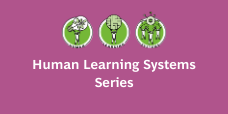
Beyond adaptation: lessons from the frontline on how shared learning fosters trust


In this story from a former Policy & Performance Officer, the truth is told about how ineffective hierarchies often result in a culture of dishonesty
Share article"My can do attitude was rewarded with promotion in the hierarchy and respect from my colleagues. Stretching the truth was seen as harmless and normal. Our behaviour was rational."
Share articleHow far are you willing to bend the truth in order to get funding, keep management happy, or get good inspection rating? A former Policy & Performance Officer shares their experience
Share articleWe put our vision for government into practice through learning partner projects that align with our values and help reimagine government so that it works for everyone.
At the Centre for Public Impact, it’s important to us to share stories from frontline workers and government practitioners wherever possible in their own words. We’ve taken the rare decision to anonymously publish the story of this former Policy and Performance Officer for a local authority in the UK to allow them to speak freely without fear of reprisal for the challenges they face.
I spent 10 years of my life writing. I wrote neighbourhood plans, partnership strategies, the Local Area Agreement, stretch targets, the Sustainable Community Strategy, sub regional infrastructure plans, funding bids, monitoring documents, the Council Plan and service plans. These documents describe the performance of local government and its partners.
I have a confession to make. Much of it was made up. It was fudged, spun, copied and pasted, cobbled together and attractively formatted. I told lies in themes, lies in groups, lies in pairs, strategic lies, operational lies, cross cutting lies. I wrote hundreds of pages of nonsense. Some of it was my own, but most of it was collated from my colleagues across the organisation and brought together into a single document. As a policy, partnerships and performance officer in local government, this was my speciality and my profession.
Why did I do it? I did this because it was my job. My manager told me it was to “to get the best for the local area” and that “you have to play the game”. When I attempted to reveal the absurdity of the situation I was criticised for not being in the real world. I quickly learned that in the real world, data is cleansed, re-presented and re-formatted until it tells an acceptable and neat story.
My can do attitude was rewarded with promotion in the hierarchy and respect from my colleagues. Stretching the truth was seen as harmless and normal. Our behaviour was rational. We told lies in order to:
Get funding
Keep councillors happy
Keep management team happy
Impress government departments
Get a good inspection rating
Compete with other organisations in our region
The purpose of our behaviour was to maximise the chances of looking good and to minimize the chance of upsetting or embarrassing important people in the hierarchy.
I quickly learned that in the real world, data is cleansed, re-presented and re-formatted until it tells an acceptable and neat story.
Am I exaggerating? My use of the word ‘lying’ is intentionally provocative but if not lying, we certainly weren’t confident that what we were writing represented reality. We made huge assumptions about the link between the data we collected and the experience of the service user or citizen. We made similarly outrageous assumptions about the impact of our interventions on local socio-economic data.
There was always a kernel of truth in what we wrote and the intentions were always good. However, the purpose of the written work was to project good, coherent, positive news. Projects were rarely abandoned, mistakes rarely made and uncertainty was never expressed. Nothing ever happened by chance, no issue was complex, little understood or messy. Our projects were almost always on track and we apparently had complete control of the future. We even knew the outcome of our work before we started it. Everything was robust, nothing flimsy. We told stories, rationalised the past, projected an ambitious image and made anything bad look good or under control. The truth even had to be re-told to fit on two sides of A4, the standard quarterly reporting template. Later, when we had performance management software, the lies were shorter – no more than 50 words; the space allocated in the progress box on the screen.
When anomalies were discovered in our data, it was treated as a technical problem or a problem of coordination. Serious attempts were made by talented and well paid people to improve data quality and to embed a robust performance management framework. These attempts did nothing to change the underlying thinking. The purpose of collecting and reporting data was to comply, not to learn. Compliance was systemic and learning was optional and ad hoc.

Meanwhile, complaints to the council flooded in, councillors’ surgeries were busy and the staff survey reported bad news – people did not feel able to do a good job. We had not reached the stage of Haringey Council, the three star council that produced the Baby P tragedy. Neither were we in the same league as Mid Staffordshire NHS Foundation, where patients were routinely neglected by a Trust that was preoccupied with cost cutting and targets in its pursuit to gain Foundation Status. However, our behaviour was the same. We were preoccupied with meeting targets, demonstrating the achievement of outcomes and avoiding embarrassment.
The alternative to lying up the hierarchy is simple. Take the hierarchy to see the truth.
We should have taken our managers, chief executives, politicians, civil servants and funders to see what was actually going on. We should have persuaded them to sit on council receptions for days at a time, to listen to hours of phone calls from the public and to understand service users in their own contexts. Only then would they begin to understand the true performance of the organisation. Performance officers do not need to spend whole days tinkering with text and formatting reports, mediating reality into something palatable. There is no need for an expensive bureaucracy between the decision makers and the truth. Confronting the brutal facts is free.
We should have taken our managers, chief executives, politicians, civil servants and funders to see what was actually going on. We should have persuaded them to sit on council receptions for days at a time, to listen to hours of phone calls from the public and to understand service users in their own contexts.
In doing so, our leaders would have discovered that the experience of citizens was quite different to the description in the official performance documents.
To find out what is really going on in an organisation, you don’t need to know which version of a report you are reading, there are no approvals necessary, no checking, nothing cross cuts and nothing comes in clusters or themes. It is just as it is. Always there, waiting to be discovered; immediate, live and real.
There are no lies here. At the bottom of the hierarchy, where the end-user touches it, you find out the truth.

We’re exploring how Human Learning Systems can offer a complexity-friendly approach to public service delivery in line with our emerging vision for government. In this series, we highlight the stories of government changemakers who are pioneering this approach - their breakthrough moments, successes, and what they’ve learned from failure - as well as what we’re learning from them along the way.






